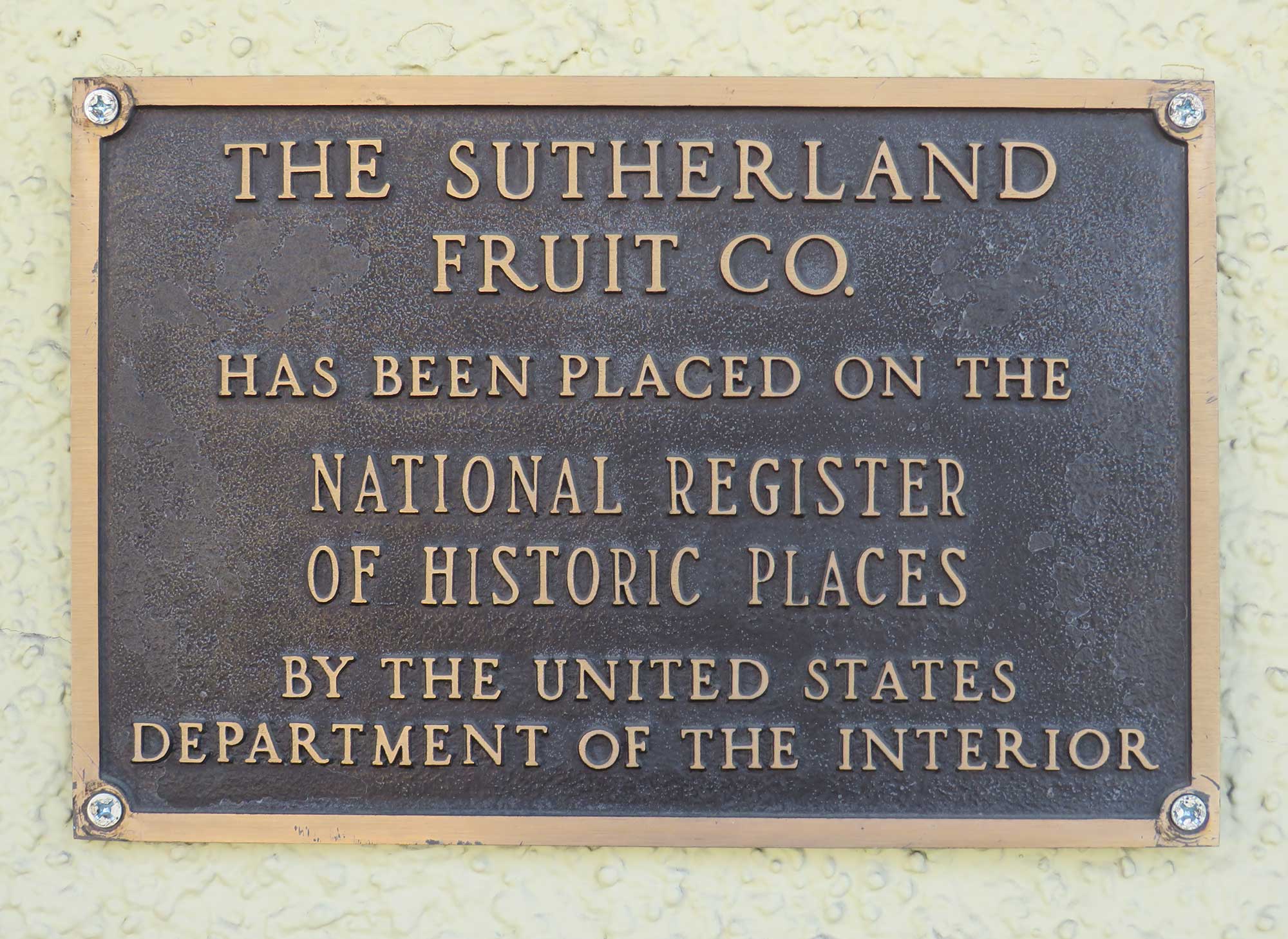🍊 Thursday Gazette: July 3, 2025
Thursday Gazette: July 3, 2025 Hello Riverside, and Happy Thursday—we're now halfway through our summer fundraiser! Our
The transformation of Riverside's former Sutherland Fruit Company packing house into the Old Spaghetti Factory is a tale of architectural adaptation, blending the flavors of history with modern dining.

Downtown Riverside is a mixture of architectural styles with structures of various ages and uses. In exploring Riverside’s history, the older buildings come into review. One older building with plenty of important local history is the edifice occupied by the Old Spaghetti Factory at 3191 Mission Inn Avenue.
In 1912, about eight years after the railroad opened through Riverside, the Salt Lake Route built a packing house that was leased out to the Sutherland Fruit Company. This Mission-style building was built on the northeast corner of Vine and Seventh (today Mission Inn Avenue), across Seventh Street from the depot. At that time, Riverside had about 28 operating packinghouses serving the orange groves.
Already at the beginning of October, the Sutherland Fruit Company called for 300 cars of navel oranges for the upcoming season to be handled by their new packing house.
Work commenced on the packing house on November 8 under the direction of architect Fred Peter, who expected to have the building ready for operation by December 1. The cement structure was 70 feet along Seventh Street and extended back 126 feet. In addition to the main packing house, there were two offices and a display room of 20 by 50 feet. A balcony was built over the working area for visitors to watch as the fruit was packed. Train passengers could walk across the street from the depot and purchase oranges either to take with them or to ship home. Noted Riverside historian Tom Patterson called this structure more than just a packing house as it was also a tourist attraction.

The front façade of the building emphasized the Mission style, rising 35 feet with two large mission doors and two mission-style windows. Over the office entrance was a Spanish balcony backed by three Mission doors. Four towers graced the front facade of the structure. The building was often called the Mission Packing House.
The Sutherland Fruit Company announced that on Friday, November 28, they would begin operation in order to have cars ready for the upcoming season. It took a remarkably short time to erect this structure and prepare it for operations.
This new enterprise was so successful that by 1914, additions were planned as they had run out of room to process the oranges. An addition on the north side doubled the capacity of the house, and more machinery was also added. The added structure was 60 by 100 feet. Mr. Sutherland anticipated that with the new addition, 500 carloads of oranges could be shipped each year.
On April 4, 1920, The Riverside Enterprise had a glowing review of the Mission Packing House, calling it “one of the most attractive of the scores of these establishments in the Riverside citrus district.” They noted that many tourists stop there to watch a typical California citrus packing operation and to purchase oranges to take home. The brands packed by the Sutherland Packinghouse were “Blue Banner,” “Green Banner,” Native,” Some Good,” and “Orange Banner.” Blue Banner was the most popular.

Just a few months later, in June 1920, the Sutherland Fruit Company filed a petition for bankruptcy. The president of the company, W. F. McShane, was arrested for fraud after presenting false bills of lading of orange shipments to the Peoples Trust and Saving Bank of Riverside. The bank lost $428,000 in the bills of lading from Sutherland.
The packing house did not remain empty for long. In November of 1920, the American Fruit Growers, Inc. of California announced that they were taking over the packing house and would remodel it to ready it for the upcoming navel season. A new feature was a fruit marking machine that printed on each orange of the best grade the words “Blue Goose, Riverside.” Blue Goose was the top-grade brand that the American Fruit Company used in Riverside. Fruit that did not meet the best standards was packed under other brand names. The company announced that its object was “to make the Blue Goose orange known throughout the United States and Canada as among the best oranges shipped from California.” The American Fruit Growers operated out of the Mission Packing House until 1953.
Following the exit of American Fruit Growers, William Latimer, a prominent citrus grower and shipper, purchased the building from the Union Pacific Railroad. Latimer restored much of the building with a new roof, new windows, and a fresh coat of paint. Having other packinghouses in other area locations, including one near Ninth and Vine in Riverside, he used this facility for storage.

On April 11, 1986, the Sutherland Fruit Company was listed on the National Register of Historic Places. The National Register of Historic Places is the official list of the nation's historic places worthy of preservation and is administered by the National Park Service.

Today, that old packing house is a Spaghetti Factory restaurant. The restaurant chain acquired the building in 1990 and converted the structure into a fine-eating establishment. The main entrance was moved from Seventh Street to Vine Street. The ambiance inside, in addition to the old beams of the packing house ceiling and walls, includes a trolley car lettered for the Riverside-Arlington Electric Railway, many old photographs of Riverside, and a display of O-scale model refrigerated boxcars used for hauling oranges.

On the Seventh Street side of the Old Spaghetti Factory, a remnant of the old Seventh Street pergolas that Frank Miller persuaded the city to erect from his Mission Inn to the train stations can still be seen to give shade for visitors walking between those sites. But those are another story for another day...
Let us email you Riverside's news and events every morning. For free!